80 years ago, the "Zoot Suit Riots" rocked Los Angeles. Why did it happen?
For nearly a week, white servicemen attacked Mexican-Americans and Blacks for wearing the flashy clothes. This month, the City apologized.
Servicemen looking for zoot suiters, photo credit: WolfSilverOak
It was spring1943 and the war raged on. By the tens of thousands, then by the hundreds of thousands, the new soldiers and sailors would arrive in Southern California to await their time to ship out. Almost all of them were young men in their late teens and 20's. Almost all of them were white. When they were on leave, they would head into Los Angeles, usually in groups, looking for fun and girls.
The Second World War was transforming L.A. demographically. There was already a large number of Mexican-Americans, but now many more came, leaving rural communities in the Southwest. African-Americans arrived in large numbers, looking for work in the defense industry. The conventions of segregation and racial discrimination effectively confined each group to their own neighborhoods - poor neighborhoods.
Eventually, maybe inevitably, the white servicemen would cross paths with L.A.'s Mexican-Americans and Blacks. It would be one of the darkest chapters in the history of Los Angeles.
The night of May 30th, 1943, a Sunday, a rumor somehow circulated among some servicemen that a Mexican-American had stabbed a sailor in the Venice neighborhood. Hundreds of sailors, joined by white civilians, went to the ballroom where a group of Mexican-Americans were dancing. As the patrons left the venue, the sailors set upon them with vicious zeal.
The next night, near Chinatown in downtown, a street brawl erupted between off-duty sailors and a group of Mexican-Americans. A seaman's jaw was broken. The white servicemen returned to their base, enraged and intent on revenge.
The stage was set.
photo credit: Kingmidas911
In the 1930s, a new fashion had started among African-American men on the East Coast. It was a flashy suit with high-waisted, wide-legged, pegged trousers and a long, baggy jacket with wide lapels. It was dubbed the zoot suit.
In L.A., the zoot suit became hugely popular among young Mexican-Americans. Women wore their own variation of it - a short pleated skirt, tight V-neck sweater, socks or fishnet stockings, and sandals. But the zoot look was more than sartorial. It was a statement. To wear it was to declare yourself rebellious, jazzy, a hipster. A zoot suiter.
"It was a look that was associated with people of color, people who were not considered white. It was definitely working class," says Catherine Ramirez, professor and department chair of Latin American and Latino Studies at the University of California at Santa Cruz, and author of The Woman In The Zoot Suit. "The zoot look was really a celebration of the spectacular, the conspicuous."
But for many white people, it was more than an emblem of defiance of social convention. It was sinister, a perception that had been whipped up by local newspaper coverage of the 1942 "Sleepy Lagoon" murder in which a Latino man was allegedly slain by zoot suit-wearing Latino gang members. [The convictions of the 17 suspects, 12 of them for murder, were later overturned.]
And, during a time of war rationing, the use of so much fabric to make the suit was considered offensive, even unpatriotic.
To many of the servicemen gathering in Southern California, the zoot suit was the uniform of the enemy.
photo credit: Everett Collection
On Thursday, June 3rd, the combustible combination of revenge, resentment and racial tension detonated.
"Fifty sailors formed a vigilante group and moved into downtown Los Angeles with concealed weapons in search of zoot suiters," according to the National WWII Museum. "Bands of service members tore through the streets, fighting any Mexican American wearing a zoot suit and viciously beating them after throwing them to the ground and tearing off their clothes. LAPD officers stood by as the assailants claimed they were acting in self-defense, instead arresting bloodied and bruised Mexican American men for 'disturbing the peace.'"
The servicemen soon began to target anyone with brown or black skin - Latinos, African-Americans, even Filipinos. A Black man wearing a defense plant badge was pulled from one streetcar and had an eye gouged out. They invaded movie theaters, demanding that the house lights be turned on and then beat up anyone in a zoot suit. Sometimes, they would tear off their target's clothes, rip them to shreds or burn them. When police responded, they would routinely arrest the victims.
Arrested zoot suiters enroute to court, photo credit; Everett Collection
"During the riots, the servicemen hunted, captured and beat people of color," Ramirez told me recently. "Often they were accompanied by law enforcement who effectively aided and abetted the rioters by standing by as they attacked their victims and then the police officers arrested the victims. This (was) state-sanctioned racial violence."
The two major newspapers, the L.A. Times and the L.A. Examiner, dutifully denounced the zooters as the instigators of the violence.
"Last night, police estimated that more than 700 of the grotesquely-clad hoodlums ... roamed Los Angeles bent on the common purpose of attacking innocent bystanders and engaging in battle with service men," read one account in The Examiner.
The Times reported, "Those gamin dandies, zoot suiters, having learned a great moral lesson from servicemen, mostly sailors, who took over their instruction three days ago, are staying home nights."
Local newspapers mostly defended the attackers
When Mexican-Americans and Blacks began to avoid downtown, where the first wave of assaults was concentrated, the attackers ventured farther in search of new victims. They launched forays into Mexican-American East L.A. and Boyle Heights, and the Black neighborhood of South Central, transported for free by sympathetic cab drivers.
In East L.A., they beat and terrorized Latino residents. Hundreds of young boys fled to police stations and the Central Jail begging for protection. In South Central, the attackers met stiff resistance as hundreds of Mexican-Americans came to reinforce Black residents. There, the mob retreated.
Beating victims were often stripped of their clothes, photo credit: WolfSilverOak
The riots -- if that's even the right word for it -- continued for five days. Finally, on June 8th, senior military commanders ordered servicemen to be restricted to their bases. That same day, the L.A. City Council took up legislation to make it illegal to wear a zoot suit, as if that would help solve the crisis.
"The violence ended when military leaders pulled servicemen from the street," says Ramirez. "That says a lot about who was involved in the fighting and who was initiating and perpetuating it."
There would be isolated skirmishes in the days to follow, but the widespread mayhem was over. No one was killed, but hundreds of Mexican-Americans had been arrested and jailed. Only a handful of servicemen were arrested. They were let go.
Luis Verdugo was injured in the riots, photo credit: Los Angeles Daily News
In the immediate aftermath of the zoot suit riots, California's Governor, Earl Warren, ordered a citizen group to investigate what had happened and why. In what can only be described as colossal understatement, its report said, "In undertaking to deal with the cause of these outbreaks, the existence of race prejudice cannot be ignored."
The mayor of Los Angeles objected.
It is now 80 years since the Zoot Suit Riots. Just a few days ago, the L.A. City Council apologized for what happened. In the chamber were relatives of people who had been beaten by the mob of servicemen. Some of the family members wore zoot suits.

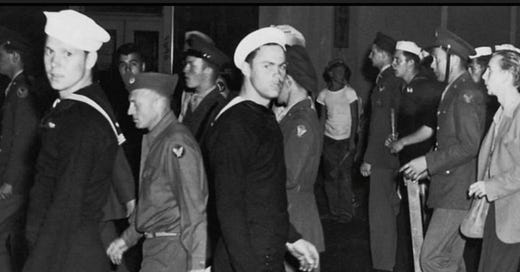



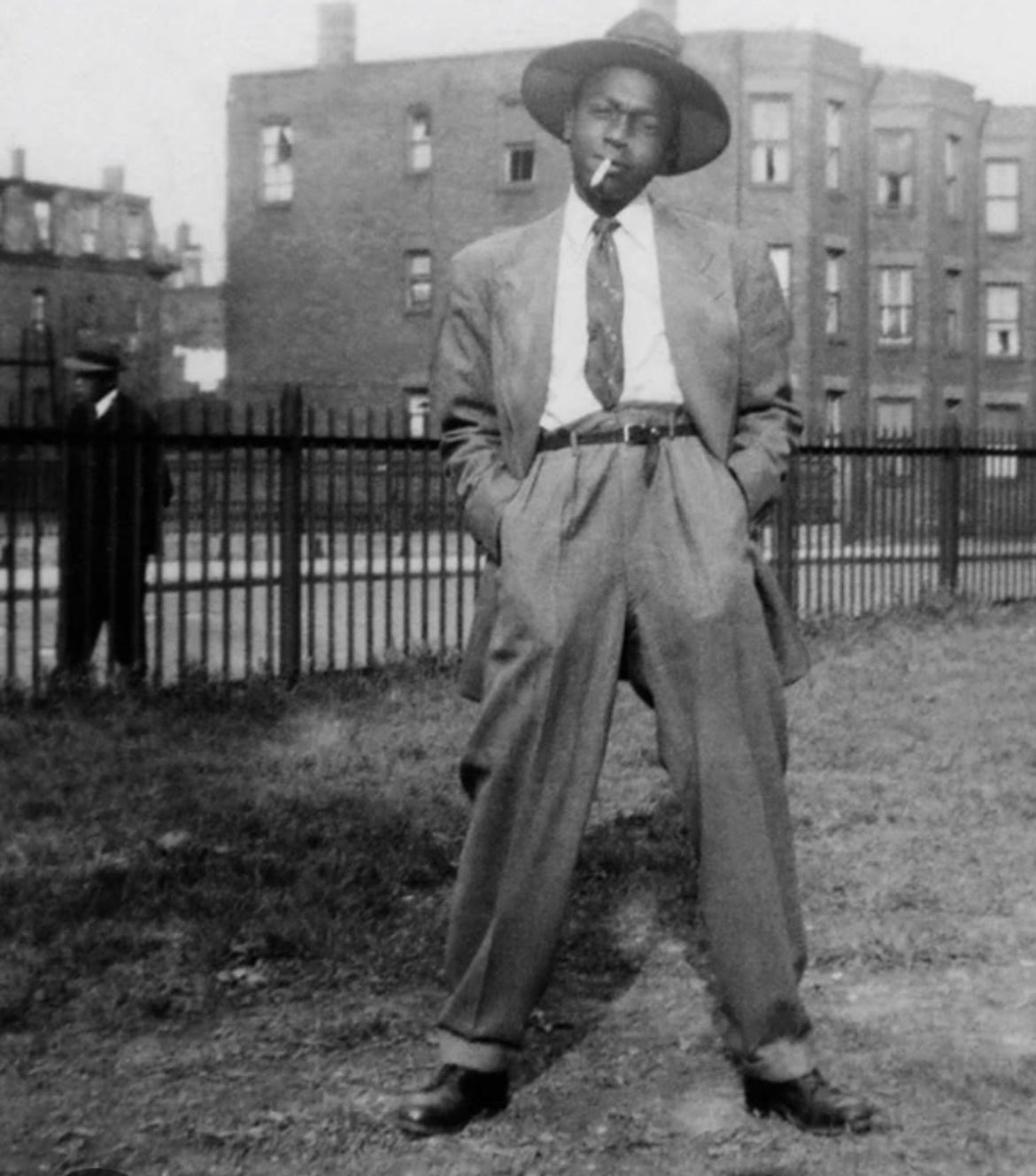
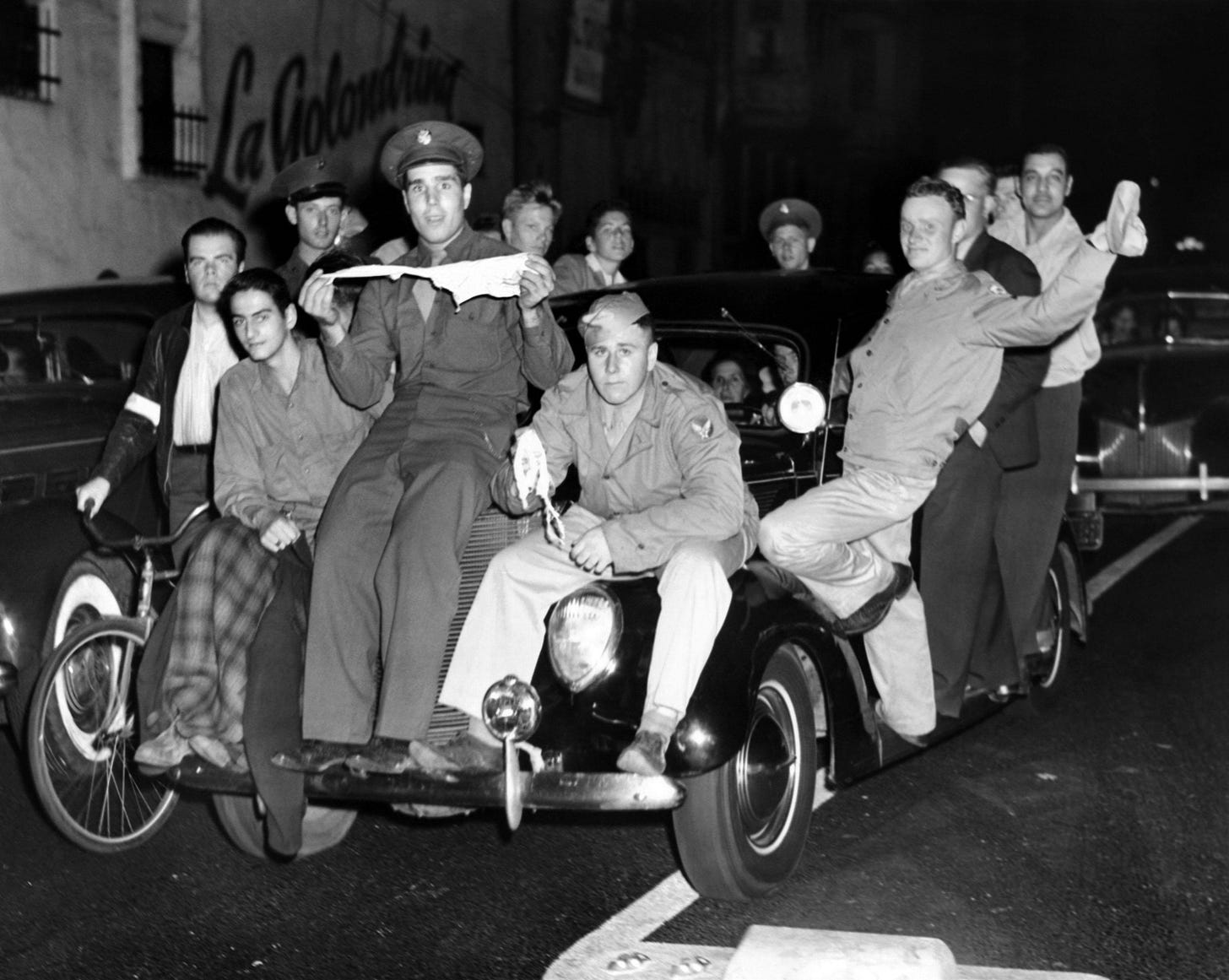
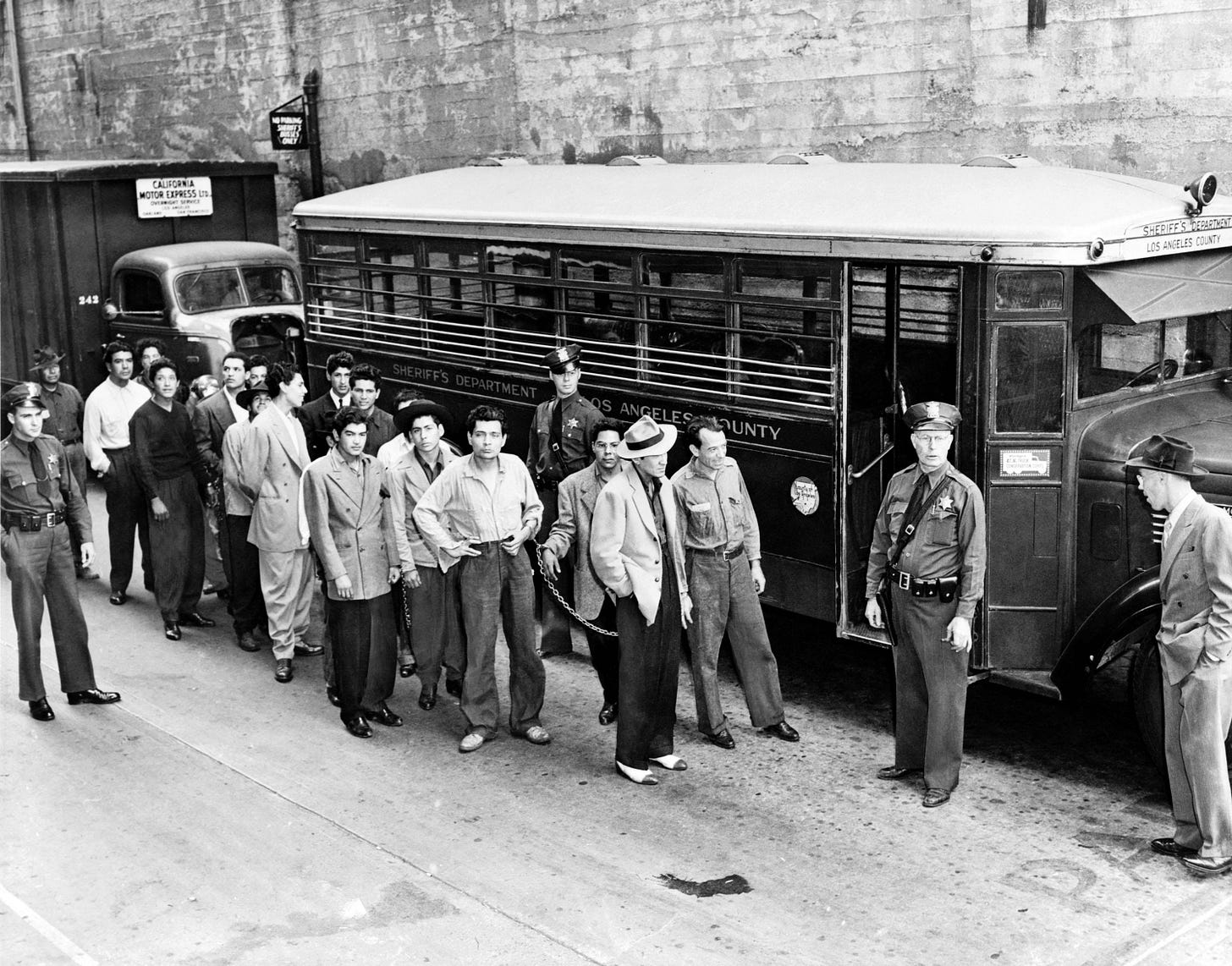

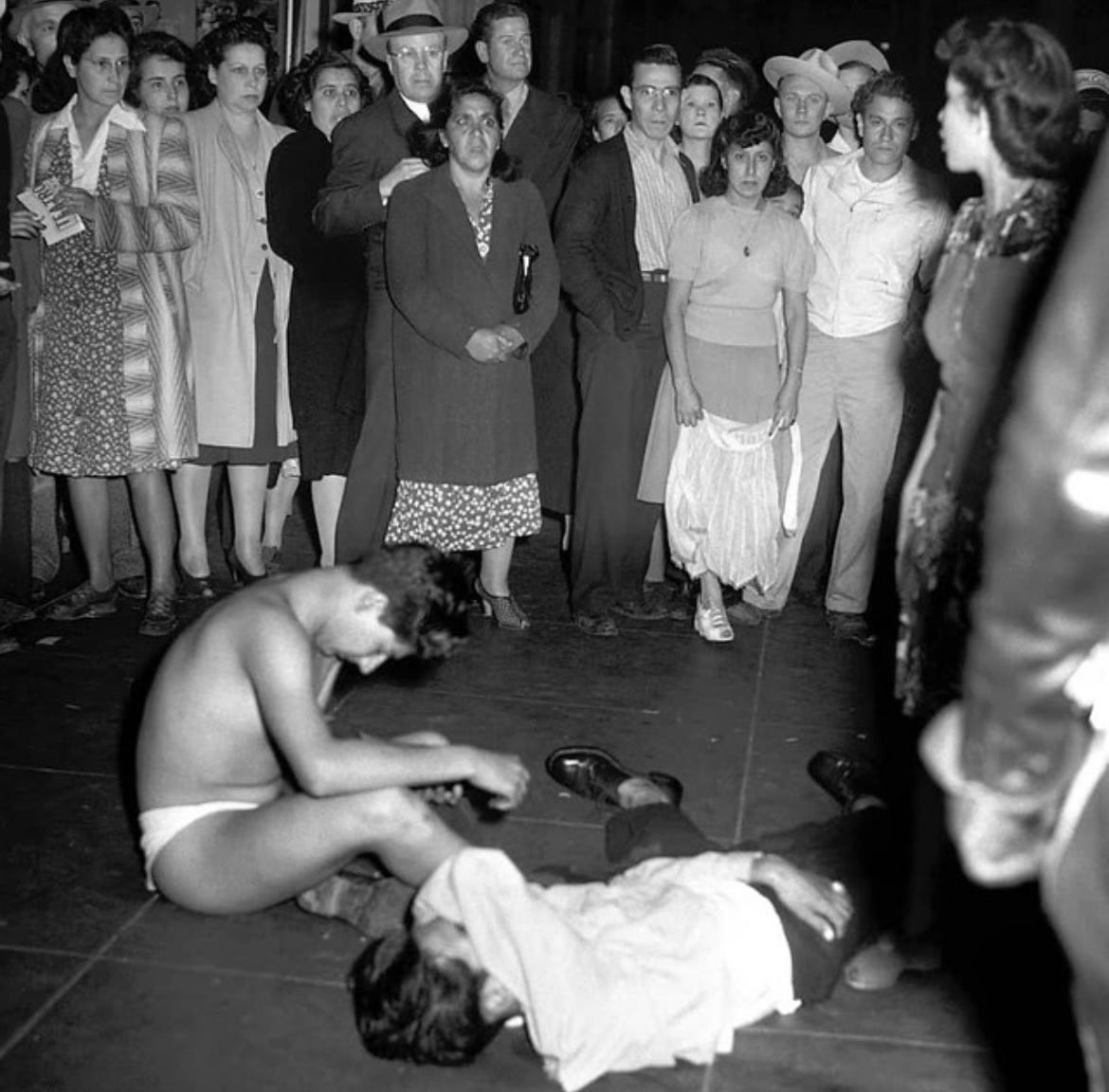
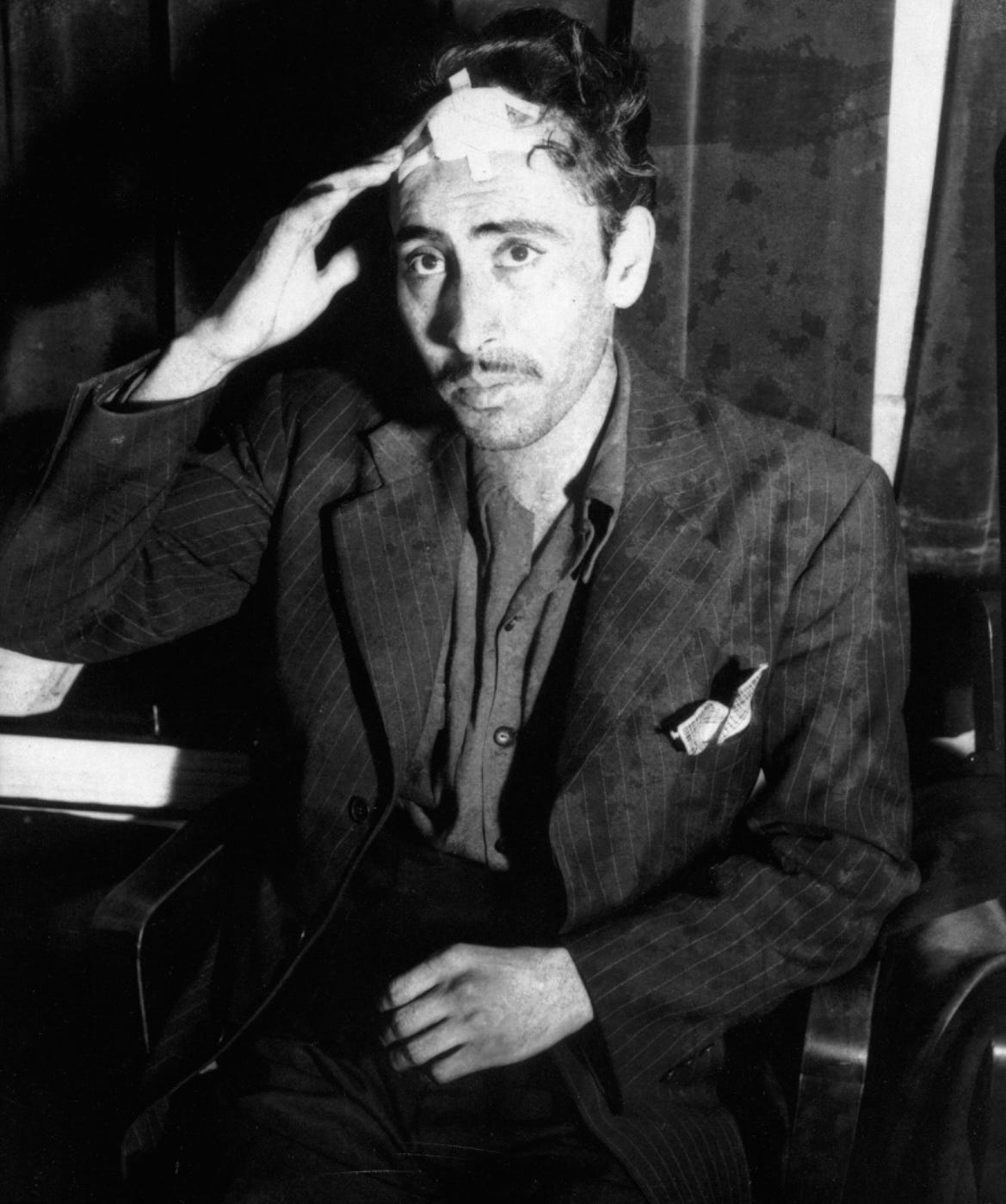
Dear Lord! I am forever stunned to read about the white hatred against “others”. I am astounded to see that sick, perverted hatred exist still and be stoked by the likes of Trump and his enablers. I remain grateful to live in CANADA - and remain deeply afraid for family and friends who live in 2023 America and it’s March toward this kind of modern day hatred. Have we learned nothing? Didn’t we fight this hatred in WWII? What the hell will it take to stop it? I despair, Ron. I truly do.
It sad to read this story as some of it still happens today. Groups of people who think they are right and justify harm to another human.